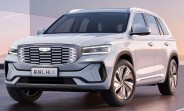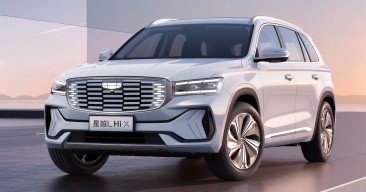Geely is about to release its SUV that's BEV, PHEV and EREV all at the same time

Geely first announced the Xingyue L Hi-P under the Xingyue L Hi-X name back in December, which is an unusual variant of its Xingyue L SUV. It's a hybrid solution that the company labels as BEV, PHEV and EREV. It may sound contradictory, but Geely worked with Volvo to develop the so-called e-CMA architecture that allows this to be possible. Here's a quick recap of the specs and design.
The e-CMA platform is a modular, highly-customizable solution with scalability. It has allowed the Xingyue L Hi-P to work in either BEV, PHEV or EREV mode. Let's start with the BEV part.
The vehicle is supplied with a 41.2 kWh battery providing 207km of autonomy in WLTC, which in theory should be enough not only for urban transport but also for short intercity trips. Fast DC charging of up to 85 kW is also on the menu and can go from 30 to 80% in just 27 minutes.
The EREV mode enables the dedicated range extender, which boosts the maximum distance to 1,250km, again according to WLTC standards. It does consume 55l of petrol to achieve that, however.
In PHEV mode, the electric motor and the range extender can work simultaneously. The three-speed inverter electric drive called DHT Pro allows for the system to draw power from the gasoline engine and the battery at the same time. A total output of 242 hp and 540 Nm capable of 0-100 km/h in 7.9 seconds. The engine itself is 1.5-liter with three cylinders with 43.32% thermal efficiency, which is quite impressive.
In automatic mode, at speeds below 20 km/h, the system would opt for a battery-only supply, between 20 and 70 km/h, the engine kicks in and helps the electric motor drive the wheels and above 70 km/h, the gearbox chooses the gasoline-powered engine as the main source of power.
Price and release date are yet unknown, but consumers will be able to see the vehicle up close and also drive it by the end of this month.








Facebook
Twitter
Instagram
RSS
Settings
Log in I forgot my password Sign up